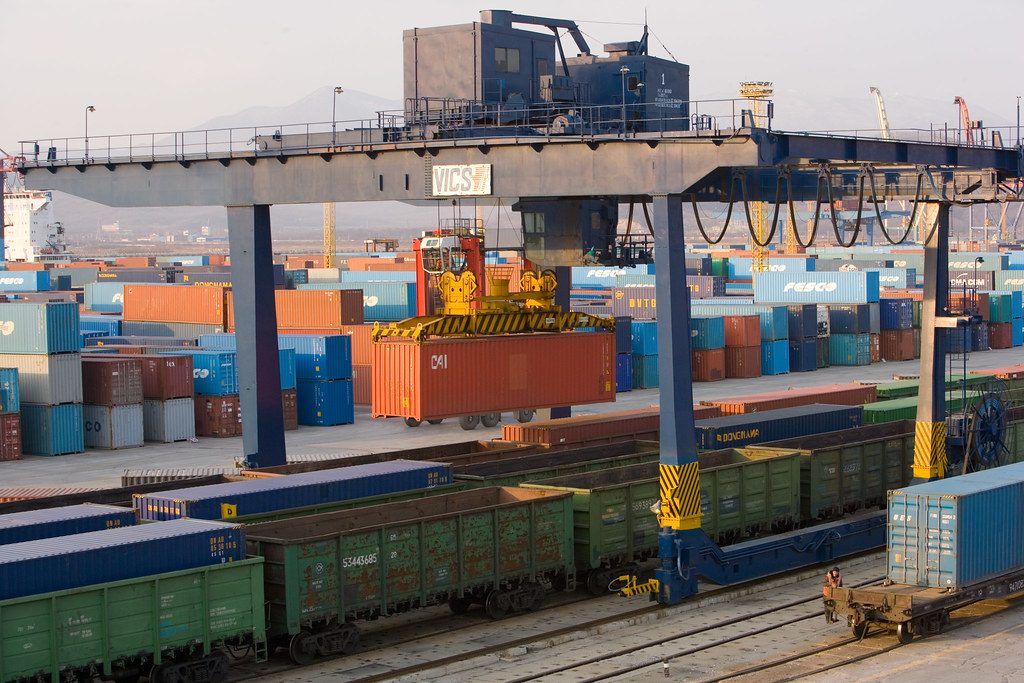The Vostochnaya Stevedoring Company, located in Vostochny Port, Russia, has completed the upgrade of more than 18,000m2 of storage yard. This is the latest achievement in its extensive handling equipment and operating facility upgrade programme. The investment will increase capacity and improve efficiency and speed of cargo handling at the terminal.
To increase the yard capacity utilisation factor in the area around berth 6, the company has completed the renovated 592 m of crane track, replacing utilities and power supply systems. New surfacing has increased storage capacity by enabling the stacking of containers six high, compared to the three tiers previously.
VSC has already commenced similar reconstruction projects for two more yards with a total area of over 38,000m2, located in the landside area of berths 5-6. Completion is due in 2021. Containers in this area are currently handled by two RMGs with a stacking height of 3+1.
Equipment renewal
VSC will shortly receive new RMG cranes with a capacity of 50 tonnes. With these RMGs, the terminal will increase handling speeds and the height of container stacking to 6+1. The new crane cabins are equipped with modern air conditioning systems and high visibility to ensure maximum control.
Four new TOYOTA forklifts have also been added to the equipment fleet. VSC currently operates 28 forklifts with a capacity of 1.5 to 5 tonnes. With a capacity of 1.5 to 3 tonnes, the new forklifts are also able operate both indoors and outdoors, including in a salty marine air environment. The vehicles comply with all safety requirements, have Stage IIIA/Tier 3 environmental safety class engines.
VSC also plans to add six new Kalmar T2 terminal tractors to its fleet in the coming quarter. Six new semi-trailers for the tractors, with a capacity of 60 tonnes, have already been delivered to the terminal.
Customs bonded storage
Last month, VSC inaugurated a customs bonded storage area, which allows customers to store import and exports goods for up to three years without paying customs duties. The usable area of the open yard is 175 m2, and the usable volume of the covered warehouse is 1,239 m3. The customs warehouse has equipment to allow for customs control procedures to take place and also guarantees the safekeeping of the goods with no unauthorised access to the yard.
“We are constantly working to improve services for our customers and the opening of the customs warehouse is yet another step towards meeting the requirements of our customers. We expect that this addition will help the customers engaged in foreign economic activity to reduce their costs, as they will not be required to move their goods to customs warehouse yards outside of VSC,” noted VSC’s Managing Director Alexey Pavlenko.
Global Ports group
VSC operates in Vostochny Port and is one of the largest container terminals in the Russian Far East, and the starting point of the Trans-Siberian Railroad. The company is one of five Russian terminals in the Global Ports group – a joint venture that combines the global expertise of APM Terminals (30.75%) with the local knowledge of Delo (30.75%), one of the largest private transportation and logistics holding companies in Russia.
With an annual capacity is 650,000 TEUs, the terminal provides a full range of stevedoring and forwarding services, including services of a state-of-the-art container freight station (CFS). The terminal handles import, export, coastal and transit containers. The terminal has recently commissioned accelerated container trains bound for Moscow, Novosibirsk, Yekaterinburg, Saint Petersburg as well as CIS and European countries and China.

























